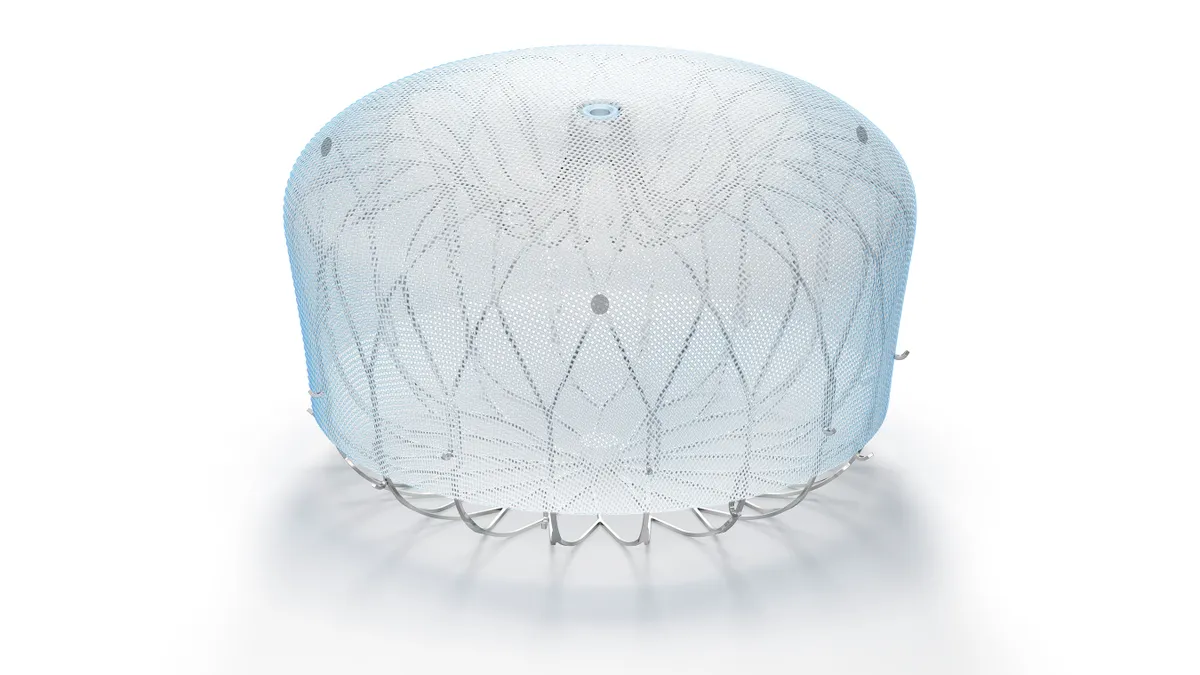UPDATE: Dec. 10, 2019: "Our investigation determined that a total of 11,299 SynchroMed II pumps manufactured during the timeframe could be potentially affected by this issue, an observed rate occurrence of four in 10,000 or 0.04%," Medtronic added in a statement shared with MedTech Dive by spokesperson Michelle Claypool, calling it an "isolated manufacturing issue."
Dive Brief:
-
FDA categorized a Medtronic voluntary recall of certain SynchroMed II implantable drug infusion pumps as a Class I event, the agency said Tuesday.
-
The recall, which began in October, follows the discovery that a foreign particle can cause the pump to stall, preventing the device from delivering the drug. The company said 10,820 pumps with model numbers 8637-20 and 8637-40 are affected, but is not encouraging prophylactic replacement of implanted devices due in part to the risk of surgery.
- The move is the latest of a series of safety actions involving SynchroMed II, which was the focus of a 2015 consent decree between the company and the Department of Justice, filed on behalf of the FDA.
Dive Insight:
The consent decree limited use of SynchroMed II to "extraordinary" cases to protect patients from a device linked to serious injuries and deaths. Those adverse events happened as a result of software and mechanical faults that caused some devices to infuse the drug at above or below the set rate.
Medtronic worked through the problems, including by taking steps to reduce motor stalls, and got the consent decree lifted in 2017. Last year, Medtronic pulled old devices that lacked a final design change designed to stop corrosion leading to motor stalls, but after that the product went 18 months without being the subject of a U.S. recall.
That changed in October when Medtronic issued a warning that foreign particles had interfered with the gear rotation of some devices, causing the motor to stall. As of the end of September, Medtronic had received five reports of “early permanent motor stall due to the presence of foreign particles from a manufacturing process.”
In two cases, the fault was identified before implantation. However, three patients were given the devices and used them for up to five months before they failed. The pump alarm alerted the patients to the failures but FDA nonetheless sees the fault as a serious threat to human heath. FDA’s position reflects the potential for the fault to cause life-threatening problems such as baclofen withdrawal syndrome.
With almost 11,000 affected devices on the market, Medtronic thinks the rate of failure is low. In light of that, the fact the alarms worked as designed and the risk of replacement surgery, Medtronic is not recommending the removal of implanted pumps. Rather, Medtronic wants the owners of unused stock to return affected devices.
Medtronic told customers it has identified and eliminated the source of the foreign particle. The last device thought to be affected by the fault was manufactured in April.












